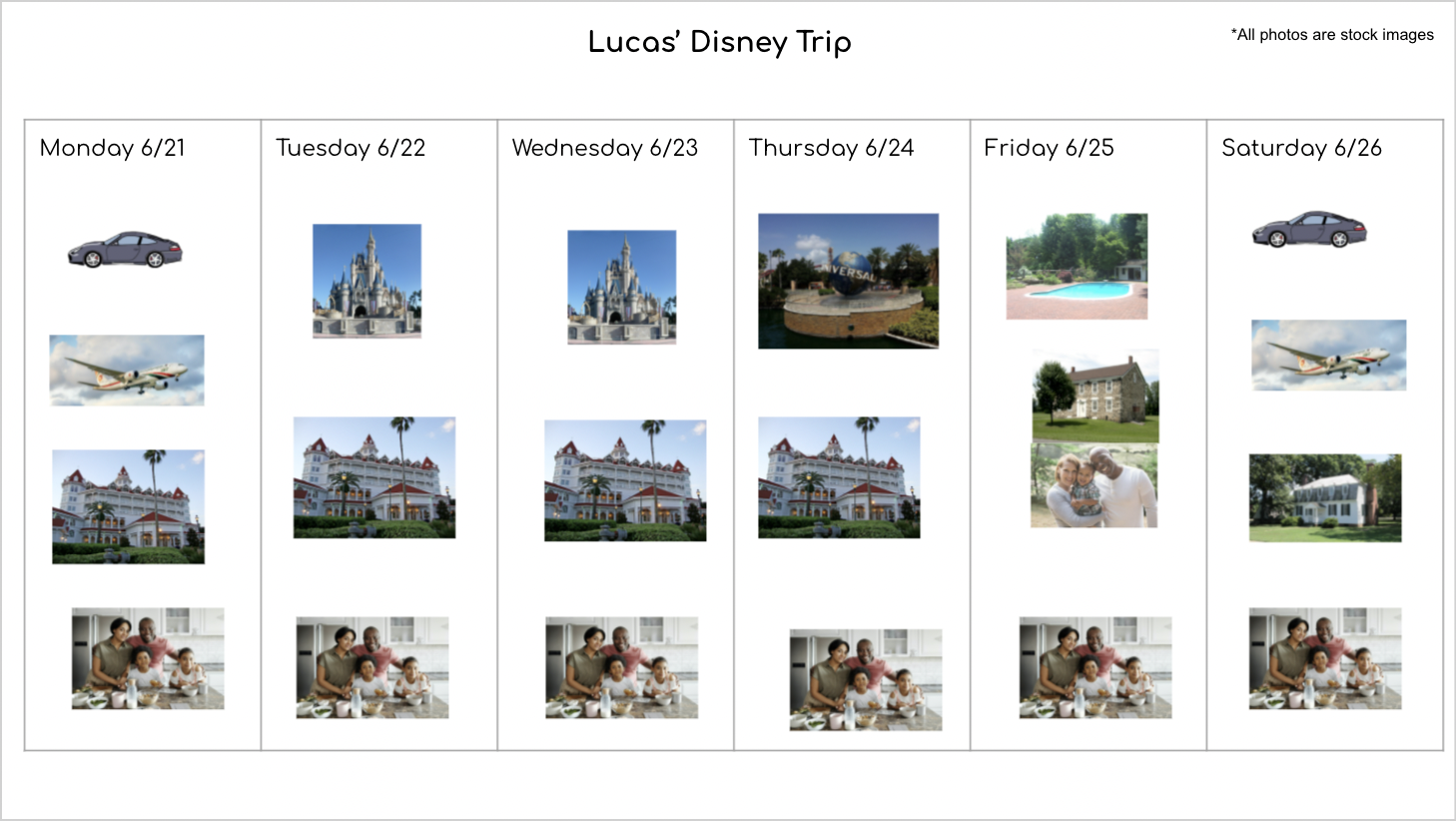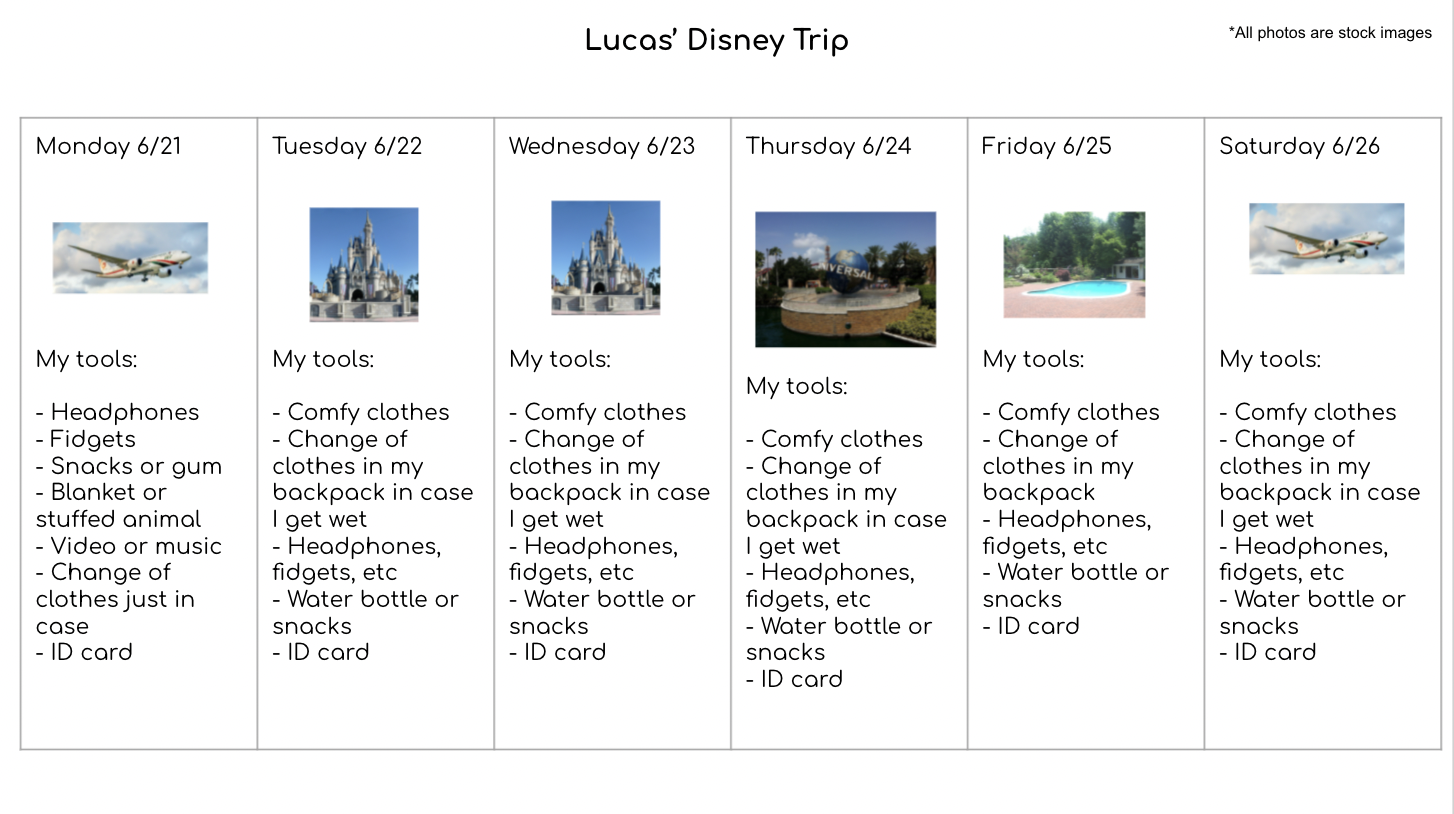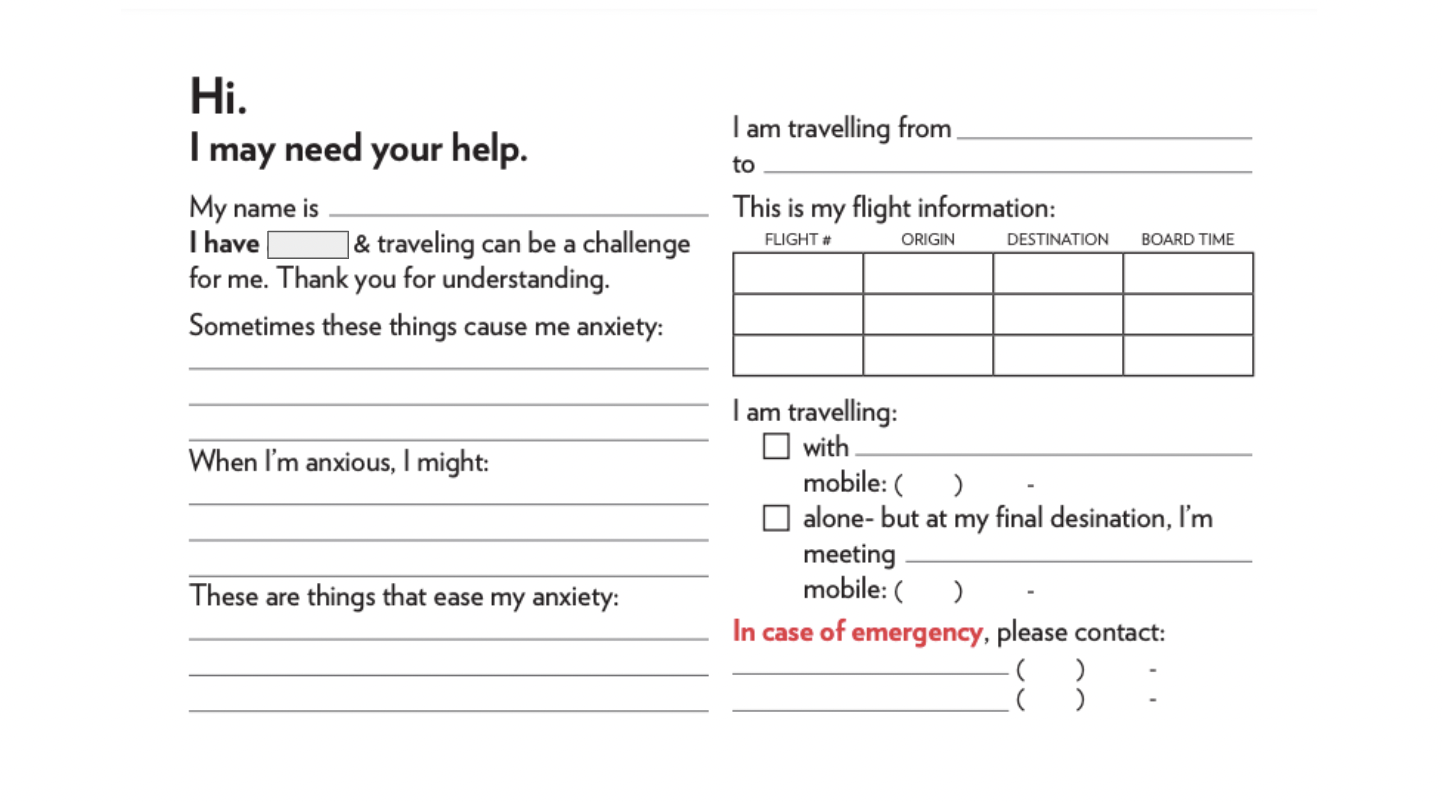Now that summer is here, your family may be considering going on a big vacation! Here, we’ll learn about ways to plan for a family trip with your child who has sensory differences, who is Autistic*, or who otherwise has needs that may require additional support or planning during vacations.
Visual Travel Itinerary
Incorporating your child’s interests and personality into the initial planning process can be helpful. Once you’ve got the rough outline for your trip, creating a visual itinerary can be a helpful tool that your child can use to identify what to expect each day of the trip. You can have your child cross off each part of the plan as the day or trip progresses and can include fun visuals about what might be happening each day. You can include images of how you’ll be managing your transportation for the day (driving, flying, etc.), where you might be sleeping at night, and who might be present during the day (immediate family, extended family, friends, etc.). This information can help give your child a general idea of what to expect during the trip. However, flexibility is key given that unexpected situations can always occur during travel!

Tool Checklist
On the back of your visual itinerary, you might find it useful to include some ideas of sensory tools or other supports that you might want to have present in case they are needed. This can also serve as a nice reminder checklist for packing, to make sure that you’ve got any needed items or sensory supports for your child. Sensory tools vary greatly depending on the child and their unique sensory profile, but in general, this image gives an example of some tools this fictional child might like to have each day of their trip. You’ll notice that I included a change of clothes for each day, even if just on the airplane. This is a great tool to have given that many children with sensory sensitivities may become very uncomfortable in wet clothes and may feel assured by having a back-up pair on hand throughout the trip. This applies even to older children who are potty trained; having spare clothing for unexpected spills or wetness can be a huge help!

ID Card
You might also notice that I included an “ID card” for each day. Some families might like to create one with their child that can be kept in their backpack or on their person, in case of emergencies or separation. There are various examples online, like this one that can be quickly printed.

Resources
If your vacation plans include any travel via airplane, this can be a consideration that requires extra planning given the HUGE sensory experience that air travel can be! There are several resources available through TSA for travelers, such as using a TSA Passenger Support Specialist who can help walk you and your family through the steps of checking in, making it through the security checkpoint, arriving at your gate, and boarding your plane. These professionals are easily reachable by calling 855-787-2227 at least 72 hours prior to your trip and providing your flight details to request a Passenger Support Specialist. Other TSA resources include using TSA Pre-check or a TSA Disability Notification Card to help streamline your airport experience.
Before your trip, you might consider using various social stories or children’s books designed to help kids prepare for air travel. You can also find point-of-view Youtube videos that give an overview of all of the steps for making it onto the airplane. There is also an organization called Wings for All through the Arc which provides free practice runs for going to an airport, going through security, and boarding a plane without it actually taking off. You can plan your seat using SeatGuru and may want to consider the seat location that best meets your child’s needs. Some children may dislike the sound of the plane, and might prefer to sit forward of the engines or in a middle or aisle seat to reduce noise. Other children may prefer to sit closer to the window to be able to lean against the wall or to be further from the visual stimuli of the passengers walking by.
When you get on the airplane, I recommend making sure to go to the bathroom right away or doing so right before boarding the plane to make sure that need is met! I also recommend talking with the flight attendant when you get to your gate to see if you can board early to get settled in and comfortable. I like the idea of having a smaller carry-on bag like a backpack that can fit under the seat in front of you so that you’ve got snacks, water, sensory tools, a change of clothes, medications, etc. handy rather than having to go looking through the overhead bin for these objects that may be needed quickly.
Traveling can be a chaotic experience for anyone, and unexpected things can always happen. While you won’t be able to plan for every challenge that comes, you can set yourself and your child up for success by including supports that may be relevant to their unique needs. If you’d like to learn more or are curious about whether occupational therapy might be helpful for your family, reach out to us here at Emerge Pediatric Therapy any time!
*Note: identity-affirming language aims to recognize “autism” not as a disease, but as an identity characteristic that should be valued. The word “autistic” aims to recognize, affirm, and value a person or child’s identity and is the preferred language used by autistic self-advocates. Learn more about identity-affirming language here.
Megan Balentine, OTR/L

0 Comments